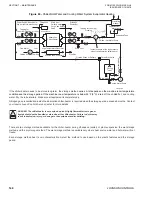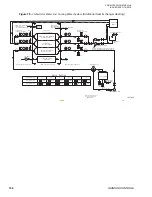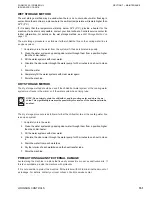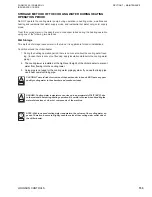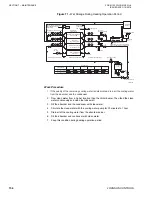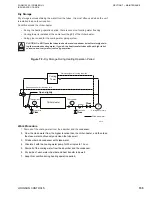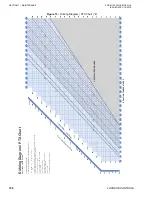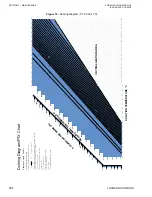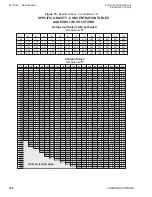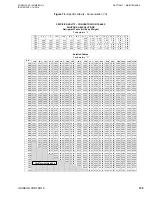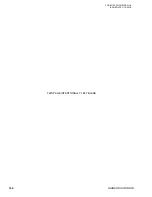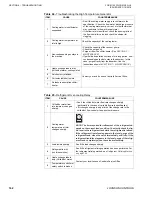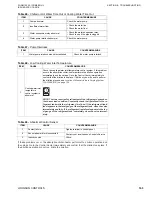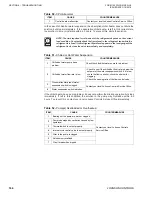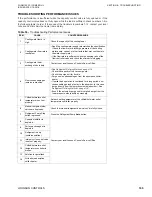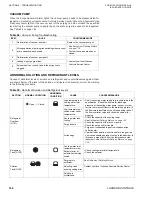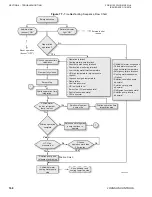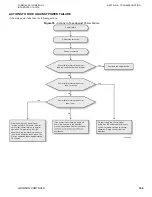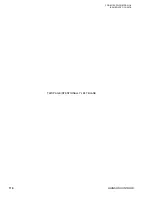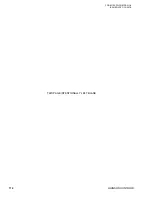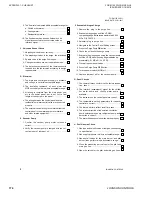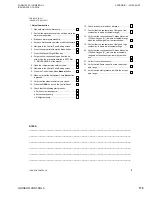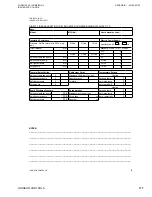
SECTION 8 – TROUBLESHOOTING
FORM 155.32-ICOM2.EN.UL
ISSUE DATE:1/10/2018
162
JOHNSON CONTROLS
Table 44 -
Troubleshooting the High Temperature Generator
Table 45 -
Refrigerant Over-cooling Relay
ITEM
CAUSE
COUNTERMEASURE
1
Cooling water is insufficient or
suspended.
• See if the cooling water supply rate conforms to the
specification. (Check the flow meter, discharge pressure
of the cooling water pump, current, or other factors that
may contribute to the water supply rate)
• If the flow rate is insufficient, check the opening ratio of
the flow controller valve and check the strainer for
clogging.
2
Cooling water temperature at
inlet is high.
Check the capacity of the cooling tower.
3
Non-condensable gas stays in
the machine.
• Check the capacity of the vacuum pump.
• Check the purge unit.
• Purge air from the chiller-heater
(See
• If partial load operation continues for a long period, non--
condensable gas tends to stay in the absorber. In this
case, purge directly from the absorber. Use the
instructions shown in
).
4
Heat exchange tube is dirty
(chilled/hot water, cooling water).
Contact your local Johnson Controls Service Office.
5
Solution is crystallized.
6
Corrosion inhibitor is worn.
7
Air leaks in absorption chiller-
heater.
ITEM
CAUSE
COUNTERMEASURE
1
Chilled/hot water flow
rate lowers or changes
sharply.
• See if the chilled/hot water flow rate changes sharply
(particularly in the case of variable flow rate specification).
•• If it changes sharply, apply a limit of the change rate to the
chilled/hot flow control or take another measure.
2
Cooling water
temperature at inlet
changes sharply.
NOTE: The time required for refinement of the refrigerant de-
pends on the current load condition. Constantly check the liq-
uid level in the refrigerant tank while the refrigerant is refined.
If the refrigerant liquid level appears in the level gauge of the
refrigerant tank, close the valve immediately and fully. If the
refrigerant liquid level appears in the level gauge of the refrig-
erant tank, completely close the valve immediately.
3
Load lowers sharply.
See if the load changes sharply.
4
Refrigerant is dirty
(contains solution).
See if the refrigerant refining operation has been performed. For
the refrigerant refining method, see
5
Heat exchange tube is
dirty (Chilled/hot water).
Contact your local Johnson Controls Service Office.
6
Temperature controller or
safety switch is broken.


